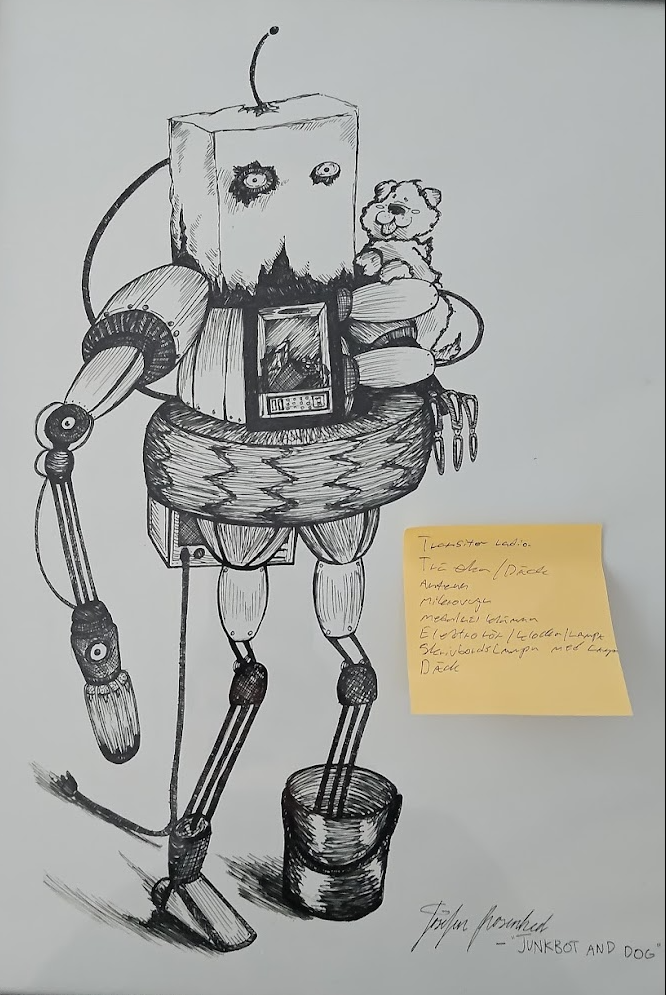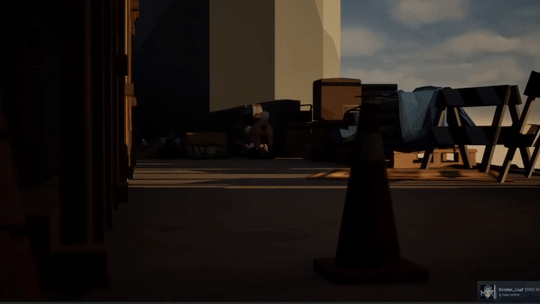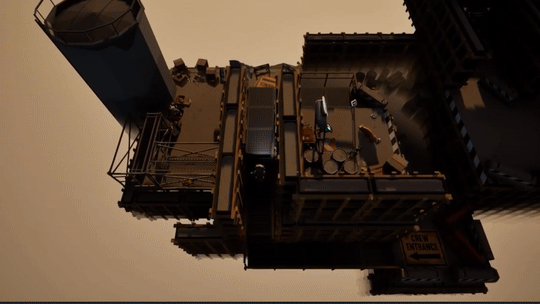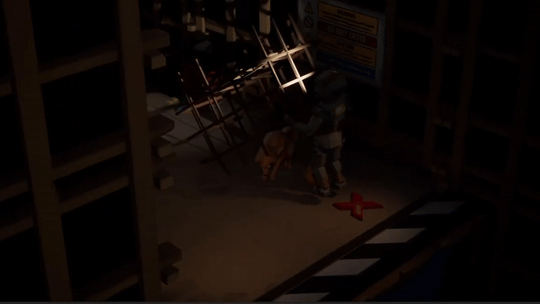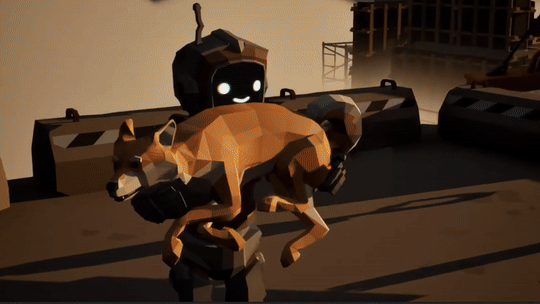Project: Junkbot & Dog
Unreal Engine 5
Blueprints
Sequenser
Mixamo
Synty Polygon Assets
This solo project was a 4-day rapid prototyping challenge with a core constraint: tell a complete, emotional story using only character animation and environmental cues, with no dialogue. The result is 'Junkbot and Dog,' a narrative experience exploring an unlikely friendship, a tragic accident, and a permanent, robotic solution to loss.
This prototype represents a demo chapter of a larger concept, which is fully detailed in a Game Design Document I have written, outlining a complete three-chapter narrative arc for 'Junkbot and Dog'.
Read more about the narrative design process
Concept & Narrative Goal
- Concept & Narrative Goal: The concept for 'Junkbot and Dog' originated from an old painting by my sister, which sparked the idea for a silent story about companionship. I immediately began outlining the narrative beats and core mechanics in a Game Design Document (GDD). When our 5-day rapid prototyping course began, this concept was a perfect fit for the main objective: to create a complete narrative prototype where the story was told exclusively through character animation and interaction, without any dialogue.
- Outcome & Reflection: My key learning from this project was that strict design constraints are not limitations, but powerful creative drivers. The 'no localization' rule forced me to find smarter, more universal design solutions that I will carry with me to future projects.
- Diegetic UI & Motivation: To provide a clear, immediate objective, I designed a diegetic UI for the robot's battery level, visible on both its chest and back. This built-in visual indicator of a low battery creates a natural sense of urgency, motivating the player to seek out the charging station where the core narrative begins.
- Conveying Emotion through Animation: Every story beat was prototyped through character movement. This included the dog's trusting animations as it guides the player, the robot's visible effort when lifting the trap, and the final, desperate sequence of trying to revive its injured friend.
- Environmental Storytelling: To support the main narrative, I placed key environmental cues for the player to discover, such as the old trap that foreshadows danger and the subsequent blood trail that creates a sense of urgency and drives the final act of the story.
- Insperation to Blueprint:I believe that a strong game concept can be sparked by anything—even a single image. This exercise showcases how I translate that initial spark of inspiration directly into a design blueprint. By analyzing a visual, I can quickly prototype core ideas, from player objectives and environmental storytelling to potential challenges and core mechanics.

